Louisiana, the land of vibrant culture and abundant biodiversity, is home to a wide array of bird species. Among these, hummingbirds stand out as enchanting creatures with their iridescent feathers and remarkable agility. But have you ever wondered when these tiny wonders bid farewell to the bayous and make their way to distant lands?
In this article, we delve into the captivating world of hummingbird migration and uncover the secrets of their departure from Louisiana. We discuss all aspects of their annual migration, from the feeding frenzy that fuels their long journey to the remarkable distances they travel. Learn about the fascinating spectacle that highlights the resilience and beauty of these remarkable avian creatures.
When Do Hummingbirds Leave Louisiana?

Adult male ruby-throated hummingbirds migrate before females and juveniles.
©Steve Byland/Shutterstock.com
Hummingbirds typically leave Louisiana in the late fall or early winter. Here are some key points:
- Hummingbirds usually leave Louisiana around November. While the exact timing can vary, this is when Ruby-throated hummingbirds tend to migrate out of the state.
- Other hummingbird species may leave at different times. Species like the Black-chinned, Calliope, Broad-tailed, Rufous, and Buff-throated hummingbirds may also pass through Louisiana during their migration, but their departure dates may differ.
- Some hummingbirds may stay in Louisiana during mild winters. In South Louisiana, for example, several hummingbird species may choose to spend the winter months there.
- The birds will generally pick winter territory and stay through February or March. While they may leave Louisiana in November, some hummingbirds will settle in winter territory and remain there until February or March before continuing their migration.
Signs to Look Out for Hummingbird Departure
Decreased activity at feeders
As hummingbirds prepare to migrate, you may notice a decrease in their visits to feeders. This could be because they are finding natural food sources or beginning their journey.
Visible signs of migration
If you observe large numbers of hummingbirds gathering and flying in a specific direction, it could be a sign that they are preparing to migrate.
Changes in behavior
Hummingbirds may become more territorial and aggressive towards each other as they prepare to leave. This behavior can be a signal that they are getting ready for migration.
Decreased hummingbird sightings:
If you notice a significant decrease in the number of hummingbirds you see in your area over a period of time, it could indicate that they have already left or are in the process of leaving.
Hummingbird Migration in Louisiana
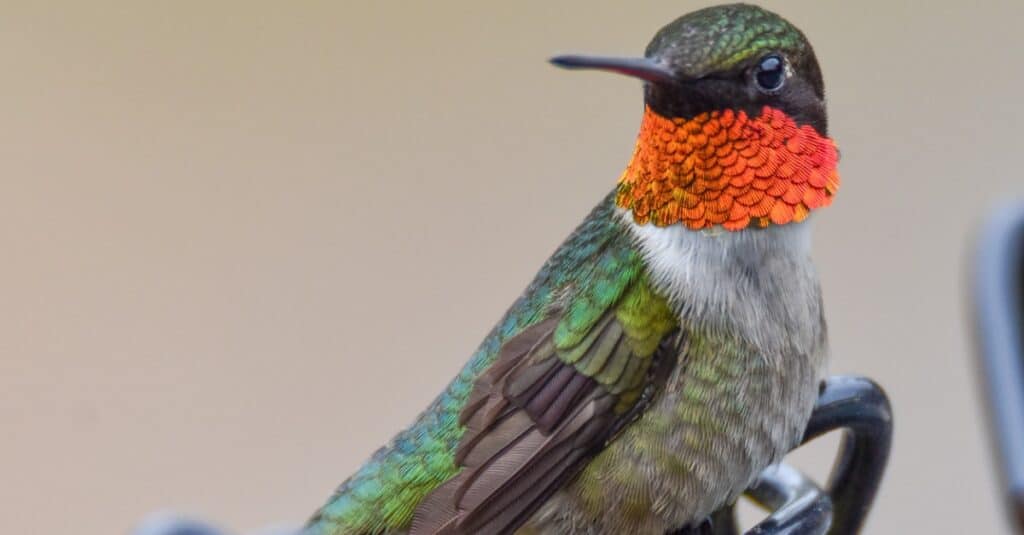
The
ruby-throated hummingbird
is the most common hummingbird species in Louisiana.
©iStock.com/Jessica Maruszewski
Ruby-Throated Hummingbird:
The ruby-throated hummingbird (Archilochus colubris) is the most common native hummingbird species in Louisiana. Here are some key points about its migration:
Migration timing:
Ruby-throated hummingbirds typically migrate through Louisiana in the fall, specifically in August and September.
Wintering in Louisiana:
While ruby-throated hummingbirds primarily migrate through Louisiana, some individuals may choose to overwinter in the state if the conditions are suitable, such as in South Louisiana.
Hummingbird Species That Migrate Through Louisiana
It’s important to note that while ruby-throated hummingbirds are the most common species in Louisiana, there are other hummingbird species that may pass through the state during migration, such as the Calliope hummingbird. These additional species may have different migration patterns and timing. Here are some of the species:
Rufous Hummingbird (Selasphorus rufus):
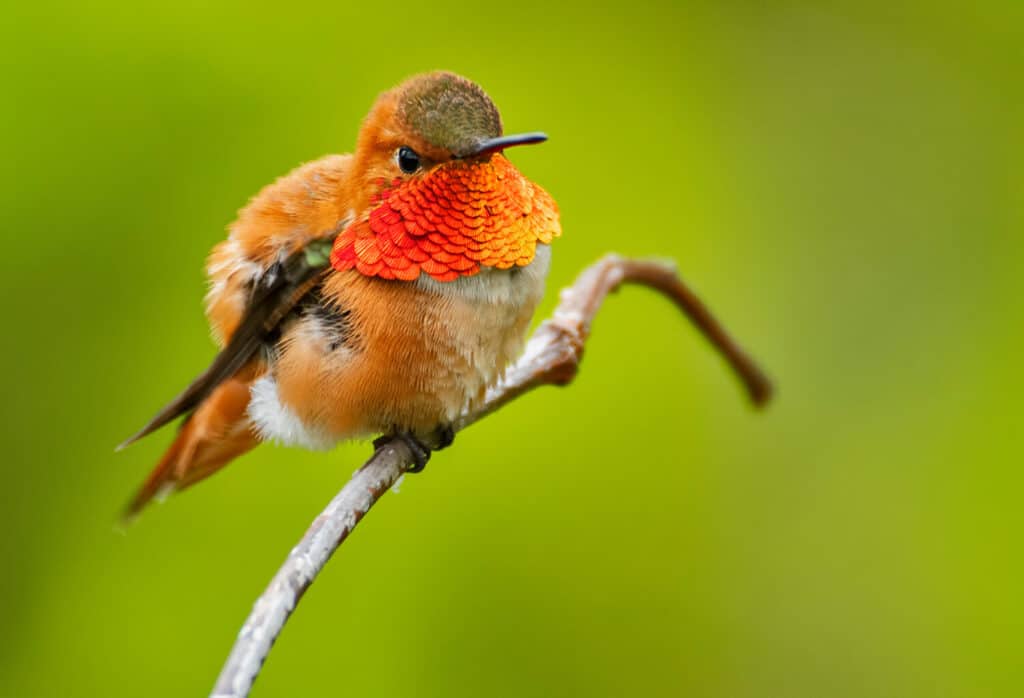
Rufous hummingbirds pass through Louisiana during their migration in the fall.
©punkbirdr/Shutterstock.com
The rufous hummingbird is known to pass through Louisiana during fall migration. They breed in the western United States and Canada and migrate southward to wintering grounds in Mexico and Central America.
Allen’s Hummingbird (Selasphorus sasin):
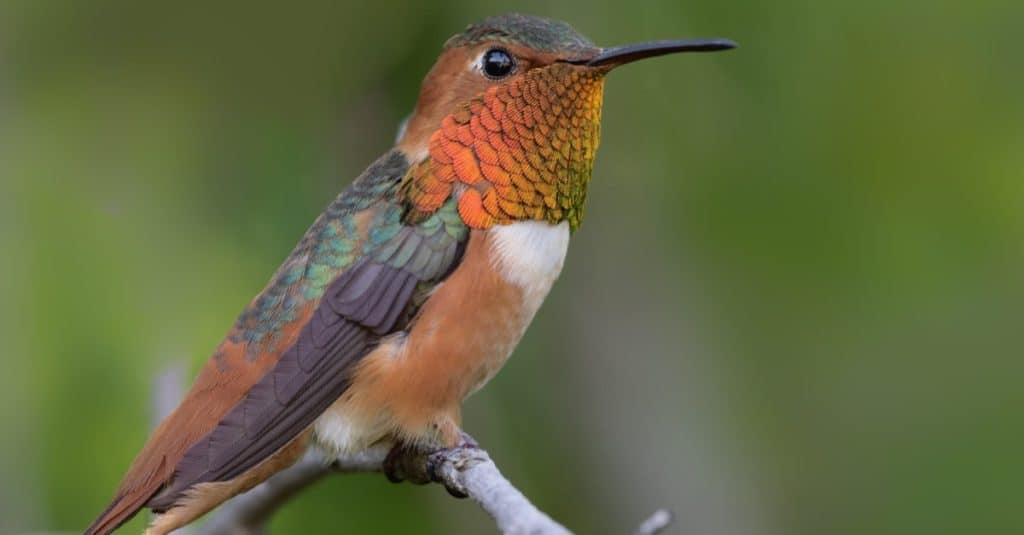
Allen’s hummingbirds occasionally pass through Louisiana when they migrate south.
©iStock.com/Angel Di Bilio
Although less common in Louisiana, the Allen’s hummingbird has been reported to pass through the state during migration. They breed along the western coast of the United States and winter primarily in Mexico.
Calliope Hummingbird (Selasphorus calliope):
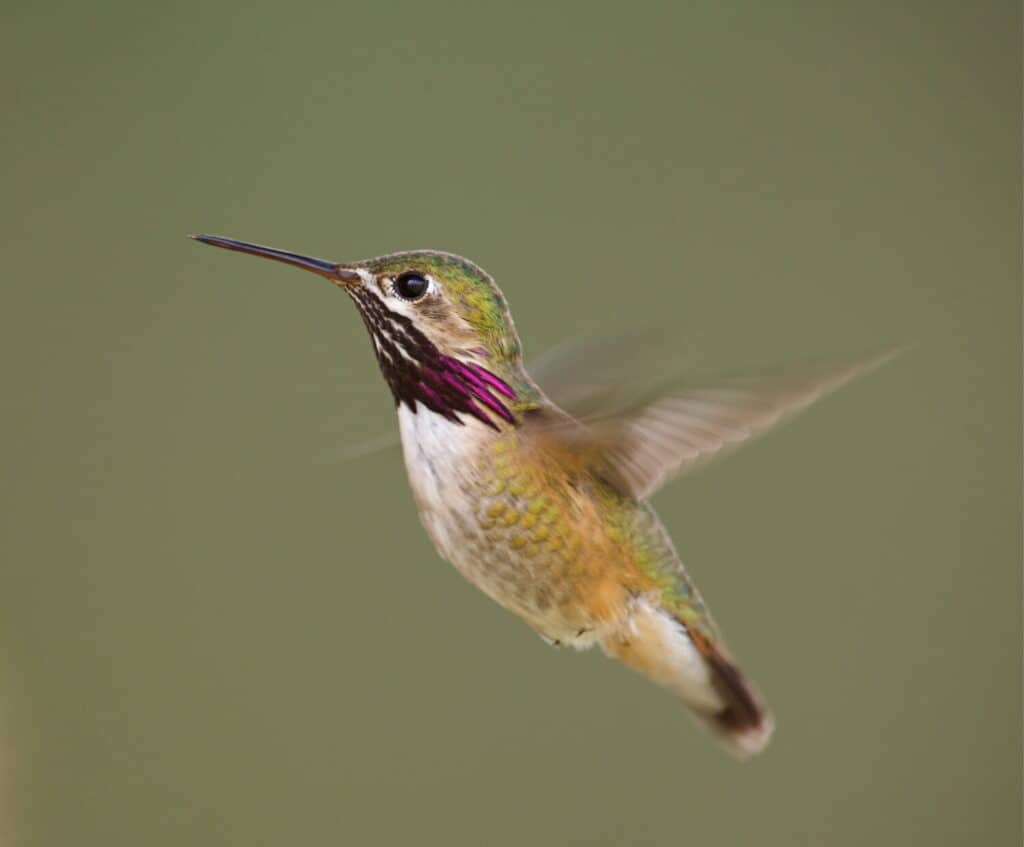
Calliope hummingbirds can sometimes be spotted passing though Louisiana during migration.
©Tom Reichner/Shutterstock.com
The Calliope hummingbird is another species that may pass through Louisiana during migration. They breed in the western United States and Canada and migrate south to wintering grounds in Mexico and Central America.
Broad-Tailed Hummingbird (Selasphorus platycercus):
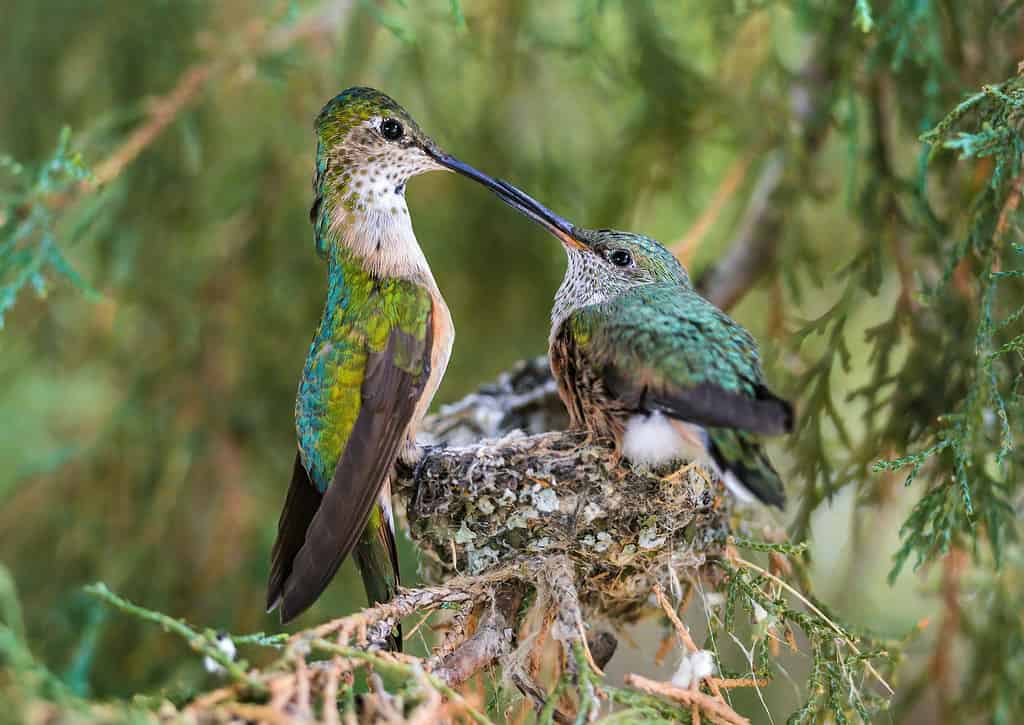
Broad-tailed hummingbirds have been reported to pass through Louisiana during migration.
©Susan Hodgson/Shutterstock.com
While less common in Louisiana, the Broad-tailed Hummingbird has been recorded passing through the state during migration. They breed in the western United States and Canada and migrate south to Mexico for the winter.
It’s important to note that the presence of these species can vary from year to year, and individual sightings may be sporadic.
Where Do Hummingbirds Go When They Leave Louisiana?
When hummingbirds leave Louisiana during their migratory journeys, they head to their wintering grounds in Mexico, Central America, and parts of South America. Hummingbirds typically begin their southward migration from Louisiana in late summer or early fall, with most of them departing by October.
Hummingbirds travel long distances to reach their wintering grounds, where they find suitable habitats and food sources to survive the winter months. It’s important to note that different species of hummingbirds may have slightly different migration routes and destinations, but generally, they follow a southward route towards warmer climates with abundant nectar sources.
Factors Influencing Hummingbird Migration Patterns in Louisiana
Here are some factors that can influence hummingbird migration patterns in Louisiana:
Food availability
Hummingbirds rely on nectar as their primary food source. The availability of nectar-producing flowers along their migratory route can influence their timing and duration of migration. If there is a scarcity of nectar-producing flowers in Louisiana, hummingbirds may pass through quickly or seek alternative routes.
Climate and weather
Weather conditions, such as temperature, wind patterns, and precipitation, can affect the migration patterns of hummingbirds. Unfavorable weather conditions may cause delays or changes in their migratory paths.
Day length
Changes in day length can trigger migratory behavior in birds, including hummingbirds. As the days become shorter, it can signal the need to migrate to their wintering grounds.
Genetic programming
Some migratory behaviors are innate and genetically programmed in hummingbirds. They may follow ancestral migratory paths that have been passed down through generations.
Habitat quality
The quality of habitat along the migration route can impact hummingbird migration patterns. If suitable stopover habitats with adequate food and shelter are available in Louisiana, hummingbirds may choose to spend more time in the area.
It’s important to note that the specific factors impacting hummingbird migration patterns in Louisiana may vary depending on the species of hummingbird and the individual circumstances in a given year.
Hummingbird Migration and the Impact on Louisiana’s Ecosystem
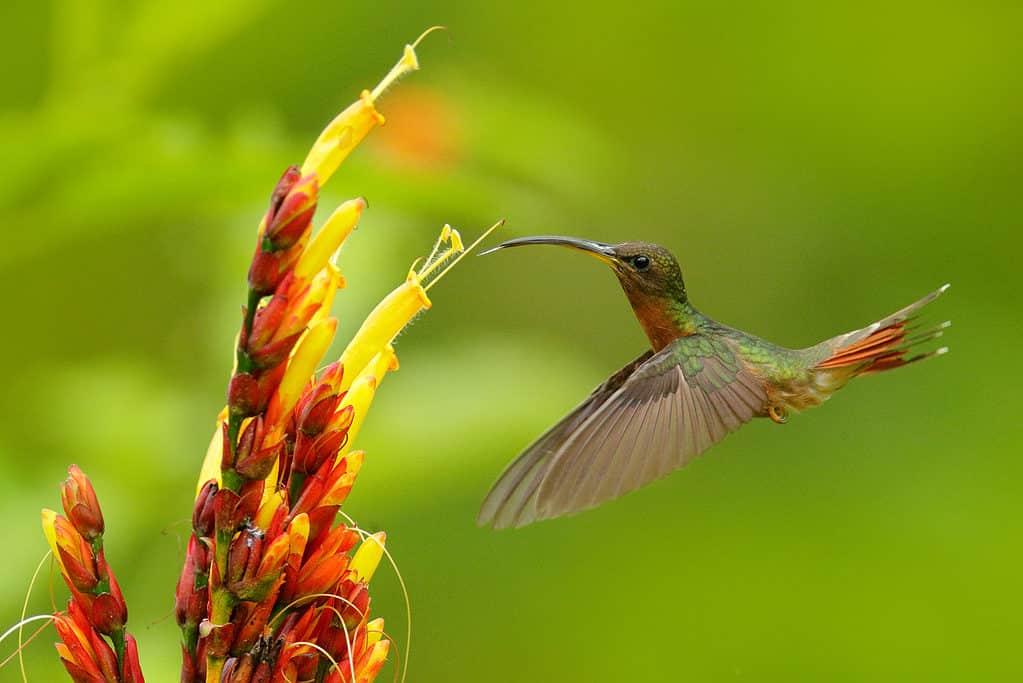
Hummingbirds are excellent pollinators making them vital to Louisiana’s ecosystem.
©Ondrej Prosicky/Shutterstock.com
Hummingbird migration can have an impact on Louisiana’s ecosystem, particularly in terms of pollination and plant diversity. Here are some insights:
Pollination
Hummingbirds are important pollinators for many flowering plants. As they migrate through Louisiana, they visit flowers in search of nectar, inadvertently transferring pollen from one flower to another. This process helps facilitate plant reproduction and contributes to the overall health and diversity of the ecosystem.
Plant diversity
The presence of hummingbirds during migration can influence the distribution and abundance of certain plant species. Hummingbirds have specific preferences for certain flower types, and their feeding behaviors can shape the plant communities they encounter along their migratory routes. This interaction can contribute to the maintenance of plant diversity in Louisiana.
Habitat utilization
During migration, hummingbirds may utilize different habitats in Louisiana, including forest edges, clearings, brushy second-growth areas, and areas with flowering plants. By utilizing these habitats, hummingbirds contribute to the ecological dynamics and functioning of these ecosystems.
Ecosystem health
Hummingbirds are indicators of ecosystem health. Their presence and abundance can provide insights into the overall condition of the ecosystem, including the availability of suitable nesting sites, food resources, and overall ecological balance.
It’s important to note that other factors such as habitat loss, climate change, and pesticide use can also influence the overall health and functioning of the ecosystem. For a more comprehensive understanding of the impacts of hummingbird migration on Louisiana’s ecosystem, further research and studies specific to the region may be necessary.
When Do Hummingbirds Return to Louisiana?
Hummingbirds typically return to Louisiana in late February to mid-March. This coincides with the spring migration of ruby-throated hummingbirds, which are the most common type of hummingbird in Louisiana.
How To Help Hummingbirds When They Return to Louisiana
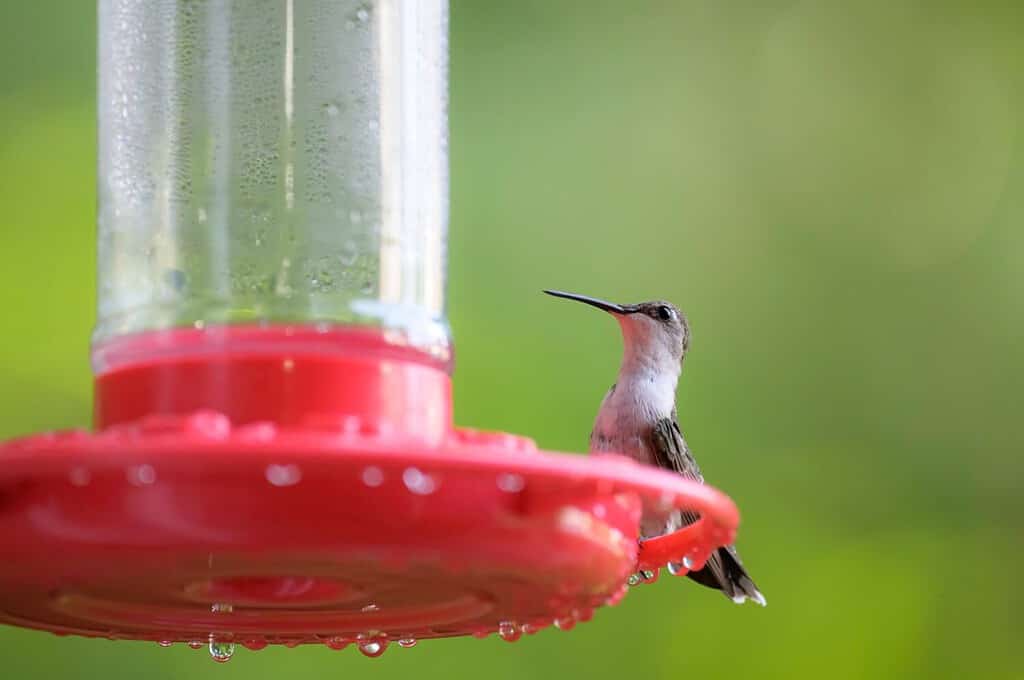
Putting out hummingbird feeders is a great way to welcome returning hummingbirds after migration.
©LHolmes Photography/Shutterstock.com
To help hummingbirds when they return to Louisiana, you can take the following steps:
Provide a food source
One of the most important ways to help hummingbirds is by providing a food source. Fill hummingbird feeders with a solution of four parts water to one part white granulated sugar. Avoid using honey, brown sugar, or artificial sweeteners, as they can be harmful to hummingbirds. Hang the feeders in a location that is easily visible and accessible for the hummingbirds. It is recommended to put out hummingbird feeders around March 1st to welcome their return.
Plant native flowers
Create a hummingbird-friendly garden by planting native flowers that produce nectar. Some examples of native flowers that attract hummingbirds in Louisiana include cardinal flowers, trumpet vines, coral honeysuckle, and bee balm. These flowers provide a natural source of nectar for hummingbirds.
Provide water
Hummingbirds also need water for drinking and bathing. You can provide a shallow birdbath or a misting feature in your garden to attract hummingbirds. Make sure to keep the water clean and fresh.
Avoid pesticides
Minimize the use of pesticides in your garden, as they can be harmful to hummingbirds and other wildlife. Choose natural pest control methods or choose plants that are resistant to pests.
Create a safe environment
Make your garden a safe space for hummingbirds by reducing hazards. Keep windows and glass surfaces visible to prevent collisions. Avoid using sticky traps or insecticides that may harm hummingbirds. Also, provide perching spots, such as small branches or twigs, for hummingbirds to rest.
The photo featured at the top of this post is © CarolinaBirdman/iStock via Getty Images
Thank you for reading! Have some feedback for us? Contact the AZ Animals editorial team.







